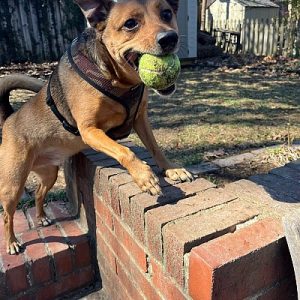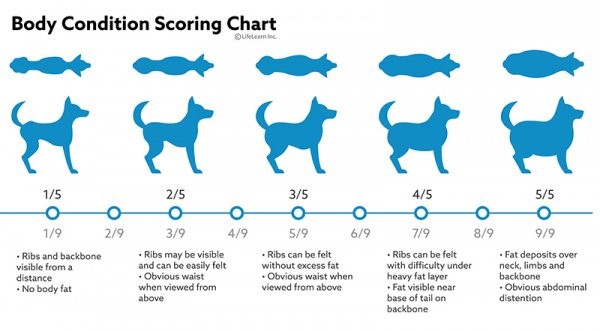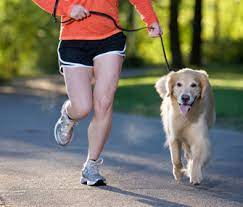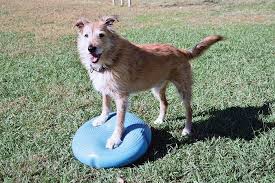
Canine health and fitness are important year-round but April, as National Canine Fitness Month, presents a great opportunity to refresh and refocus the fitness goals we have for our dogs. Each dog breed was created to perform a certain job but these days, especially in the DC area, most dogs are companion animals. Excessive sitting and too many calories in the form of treats often contribute to weight gain, lethargy and behavioral problems. Obesity in dogs can not only cause a number of health problems such as diabetes, heart disease and a higher risk for cancer, it can also cut years from their lifespan. But what is the right amount of activity for your dog?
First, let’s determine if your pup has a healthy body condition. Knowing an ideal weight range for your dog’s breed can be a helpful guide but every dog and every breed is different. The number on the scale does not provide a complete picture. It’s more about how your dog fills out their frame than their weight. This chart shows basic ideal shape in the center with underweight shapes on the left and overweight shapes on the right. Find where your dog falls on the chart and discuss an appropriate action plan with your veterinarian if needed.

Your dog is at their ideal body condition if:
- their ribs are easily felt without excess fat covering them
- from above, the waist can be seen behind the ribs
- from the side, the abdomen is tucked up, rather than running straight back to the legs
Next, we should discuss what is an appropriate amount of activity for your dog. The general consensus is that an hour of exercise a day is required to keep your four-legged friend fit, happy and healthy. However, the exact amount of physical activity your dog needs depends on their breed, age, energy level, personality and general health.
For example, puppies benefit from several short sessions throughout the day since they are constantly growing and their developing bodies can’t handle too much at once. And obviously senior dogs will need less activity than they did as an adult as they tire more easily and are less flexible.

You must also consider breed limitations such as:
- Short-nosed breeds should not engage in strenuous exercise that will tax breathing.
- Deep-chested, narrow-bodied breeds should not be exercised right after meals since they are prone to bloating. They also risk hip dysplasia and ligament injuries that sustained jogging may cause.
- Scent hounds have a lot of endurance and can go for miles without getting winded.
- Shorter sprints are advised for sight hounds who run on speed and are not built for long distances.
These limitations just apply to physical activity like walking, jogging, hiking, playing, swimming, agility and sports. Luckily, engaging mental and social stimulation contribute to their activity totals and work to tire your dog as well. Some great ideas to exercise your dog without extreme physical exertion include food puzzles, scent work and obedience training.

Keeping your pup active and healthy not only adds years to their life, but also gives you a great opportunity to bound with your best friend. Your pup wants nothing more than to just be by your side, and we as owners just want to have our pups for as long as possible. What other healthy activities do you do with your pup? Comment below!





Leave a Reply